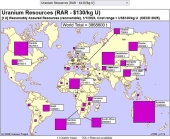


Christopher Weeks wrote:I learned sconnie from a friend who lives in Milwaukee. I never hear it over here, so I was assuming it was really a Chicago-Milwaukee thing, but I like finding occasions to whip it out.
Your uncle probably needed to fight off the local hodag with a security kangaroo.




Murat Kuntel wrote:Thank you again to all of you who responded, welcomed me and offered your wisdom. I will try to answer Derek's questions.
Growing season I think is late May through September. Yes, I am in Prince George, Bc.
I am looking for the Red I tasted while in Manitoba, sold commercially in grocery stores. That's why I am pursuing the Red kind. Norland again was satisfactory, and I heard from a farmer here recommending Red Pontiac. Chieftain also seems interesting to me.
I am looking for one good for baking and making potato salads. Not frying, not mashed.
There are several nurseries that bring different Red varieties. I can pick and try each one of course, but I tried here, perhaps you may have a variety that appeals to you.
I will look for a local gardening group and see what they offer.
Thank you again for your kindness and the time you took and greeted and responded to me.
May your efforts bear fruits to your taste.




Annette Jones wrote:
Human hair clipping work well if you can get enough boots to donate :-) They simply won't go on it, added bonus is it adds nitrogen to the soil as it decomposes.